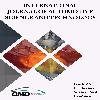Piston Crown Profile Modifications for Various Combustion Mode Strategies of Modified GDI Engine towards NOx and PM Reduction
In the current development of automotive engines, the major target is to design a combustion chamber in such a way that the combustion process must provide very less concentrations of emissions. To satisfy current worldwide emission norms, petrol engines also equipped with direct fuel in-jection (gasoline/petrol directly injected into engine cylinder) same as like diesel engines. The main drawback of GDI engine is NOx and PM emissions due to lean burn combustion and rich mixture formation over the combustion chamber surface because of wall wetting. In GDI engines, the gasoline fuel injector is placed at various positions with different angles over an engine cylinder head as per the mode of combustion strategy. Based on the mode of combustion with fuel injection angle, the piston crown shape design in much important that the crown surface must not involved in wall wetting during injection. The piston crown shapes were modified for Spray guided combustion mode, Wall guided combustion mode and Air guided combustion mode by keeping in mind that the position of injector with fuel spray angle and the position of spark plug tip on the cylinder head. The main aim of modifying the crown surface profiles of piston is to impart swirl and squish effects for better mixing of air and injected fuel, maintain combustion chamber surface temperature range within the limits and also to avoid wall wetting results in chances of reducing soot particle/PM emission and NOx emission from combustion process.
Keywords:
Combustion Modes, Crown Profiles, GDI Engine Piston Shapes,
___
- Dr. Pradeep, Professor, Department of Mechanical Engineering, Rajalakshmi Institute of Technology, Chennai, India.
- Dr. Kumaresan, Associate Professor, Department of Mechanical Engineeing, Bannari Amman Institute of Technology, Coimbatore, India.
- Yayın Aralığı: Yılda 4 Sayı
- Başlangıç: 2016
- Yayıncı: Otomotiv Mühendisleri Derneği
Sayıdaki Diğer Makaleler
Hüseyin BAYRAKÇEKEN, Faruk Emre AYSAL, Hicri YAVUZ
Esra DOKUMACI, Kazım ÖNEL, Uğur AYBARÇ
